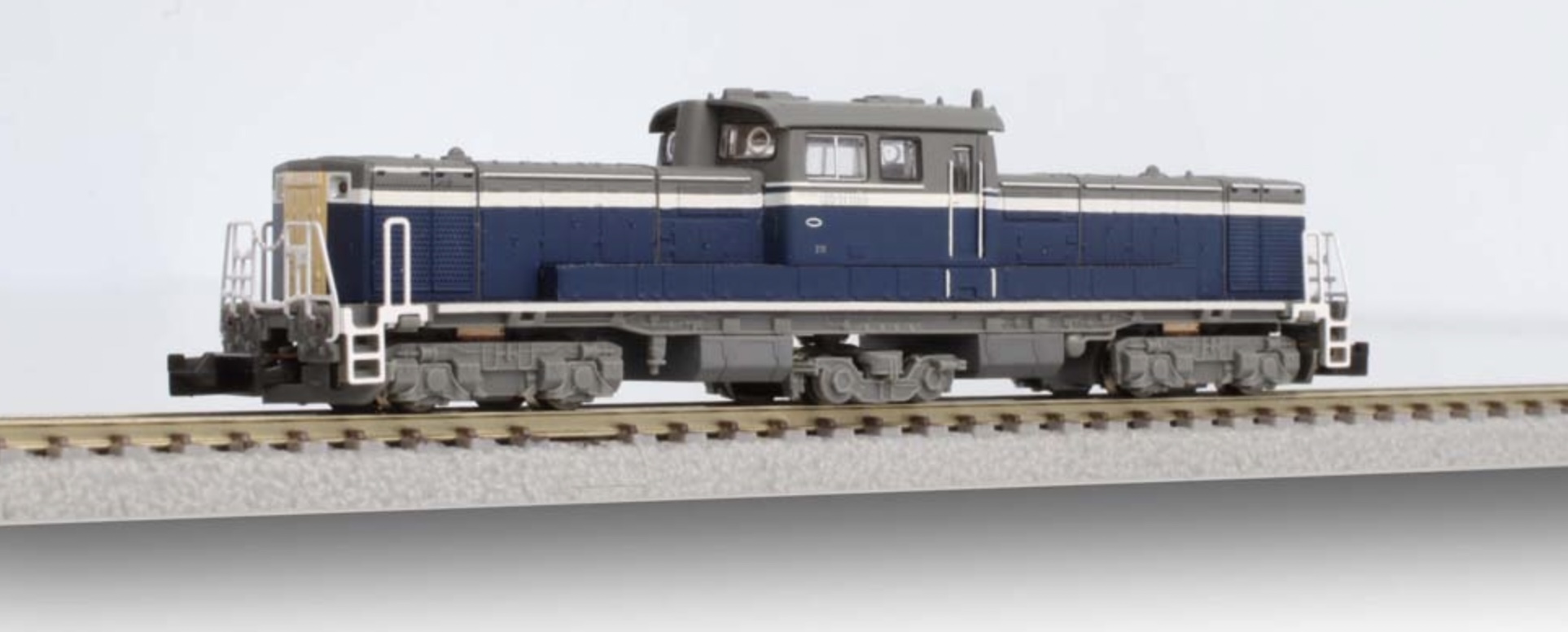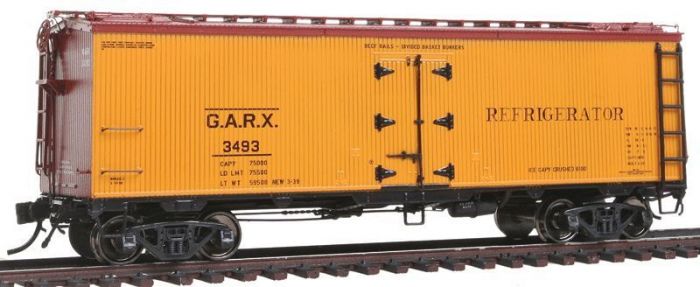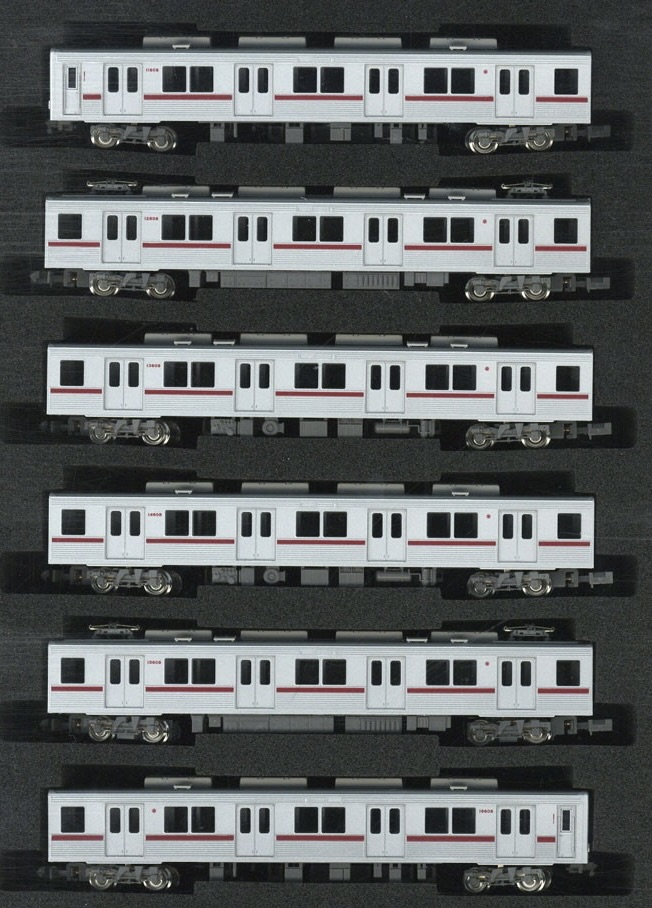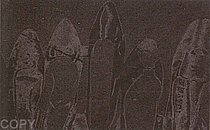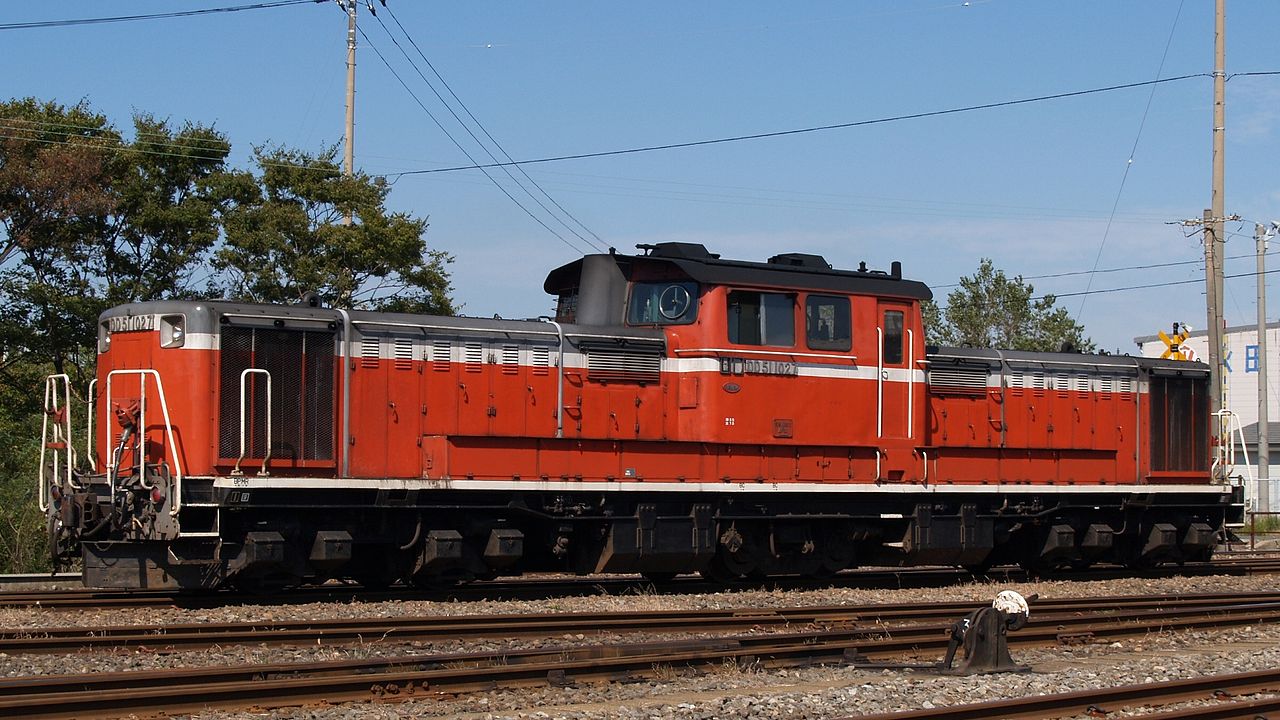Prototype History: The Class DD51 (DD51形) is a B-2-B wheel arrangement diesel-hydraulic locomotive type operated in Japan since 1962. 649 locomotives were built between 1962 and 1978 by Kawasaki Sharyo, Hitachi, and Mitsubishi. The class was designed for mainline passenger and freight use with more power than the D51 and a higher maximum speed than the C62 steam locomotive classes. This was achieved by installing two 1,100 hp engines in an 18 metre long centre-cab design, unusual for mainline operation. The V12 DML61 engines were developed from the 6-cylinder inline DMF31 engines used in the Class DD13 locomotives.[3] As of 1 April 2016, 29 locomotives remained in operation.
Road Name History: Japan Freight Railway Company (日本貨物鉄道株式会社 Nihon Kamotsu Tetsudō Kabushiki-gaisha), or JR Freight (JR貨物 Jeiāru Kamotsu), is one of the constituent companies of Japan Railways Group (JR Group). It provides transportation of cargo nationwide. Its headquarters are in Shibuya, Tokyo near Shinjuku Station.
The Japan Railways Group was founded on April 1, 1987, when Japanese National Railways (JNR) was privatized, and then divided into six regional companies and Japan Freight Railway Company. Although the passenger operation of JNR was split into six companies, fares and regulations are standard for all companies and every region of Japan except Okinawa is covered by the railway network spanning approximately 19,800 kilometres (12,300 mi).
Formerly part of JNR, the freight operation was not divided and became a single separate company when JNR was privatized and split. Although it has only about fifty kilometers of track of its own, it also operates on track owned by the JR passenger railways and other companies. The company uses the initials JRF as an abbreviated name for identification.
From Wikipedia
The Japan Railways Group was founded on April 1, 1987, when Japanese National Railways (JNR) was privatized, and then divided into six regional companies and Japan Freight Railway Company. Although the passenger operation of JNR was split into six companies, fares and regulations are standard for all companies and every region of Japan except Okinawa is covered by the railway network spanning approximately 19,800 kilometres (12,300 mi).
Formerly part of JNR, the freight operation was not divided and became a single separate company when JNR was privatized and split. Although it has only about fifty kilometers of track of its own, it also operates on track owned by the JR passenger railways and other companies. The company uses the initials JRF as an abbreviated name for identification.
From Wikipedia
Item created by: CNW400 on 2021-09-21 15:06:06. Last edited by CNW400 on 2021-09-21 15:09:02
If you see errors or missing data in this entry, please feel free to log in and edit it. Anyone with a Gmail account can log in instantly.
If you see errors or missing data in this entry, please feel free to log in and edit it. Anyone with a Gmail account can log in instantly.


